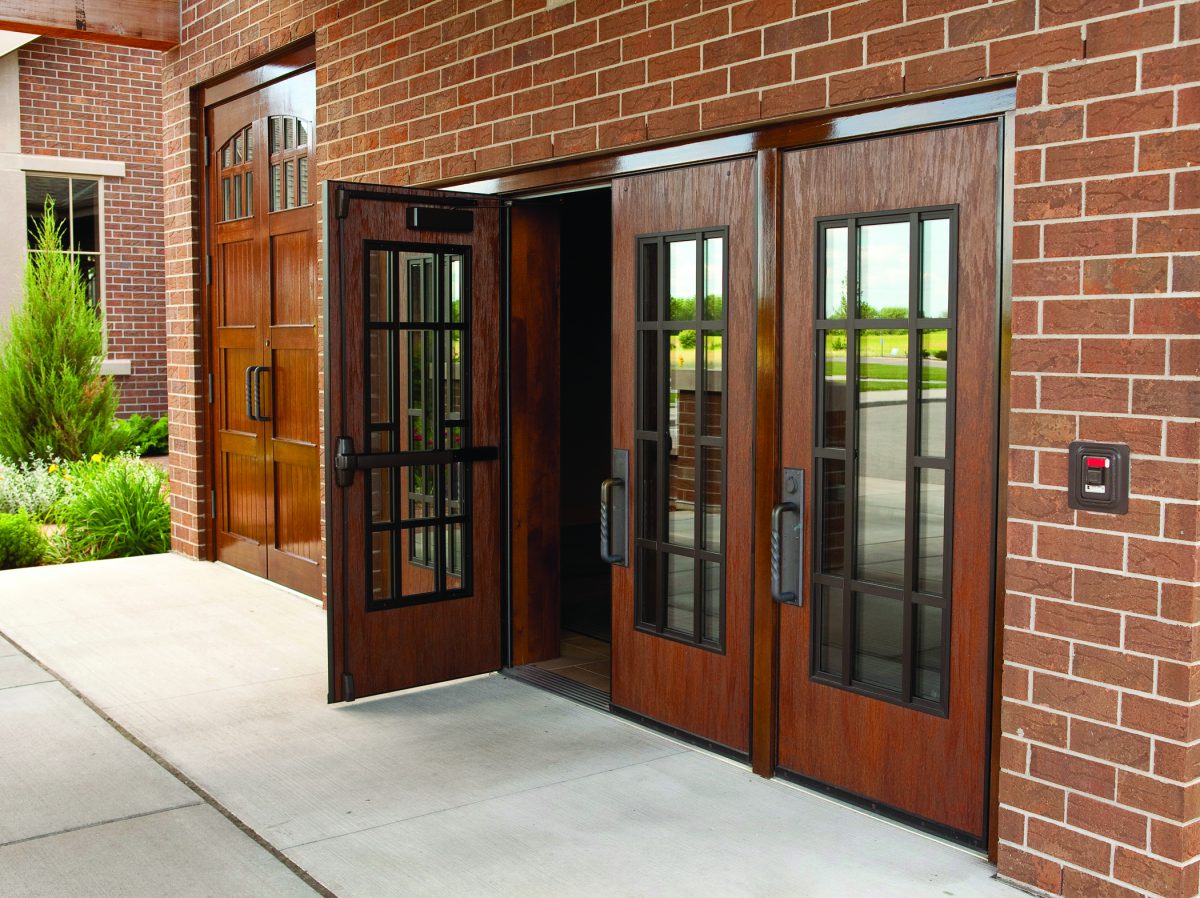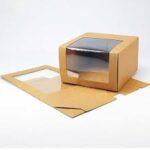Solid wood doors have long been considered the premium—and only—choice for homes. But as times have changed, innovations have come along that place other doors—hollow core and solid-core—on an equal playing field with solid wood doors.
Wood Doors: What’s the Difference?
At first glance, many wood interior passage doors and wood exterior doors do look and feel like they are made entirely of solid wood. It’s a clever simulation because, in most cases, these doors use construction methods designed to make them only look like solid wood—while avoiding some of the drawbacks of solid wood doors.
Wood doors used in residential construction come in three types: solid wood, solid core, and hollow core.
Solid Wood Door
Solid wood doors are just as the name says: solid wood. All elements of the door except for knobs, hinges, and hardware are wood. Usually, solid wood doors are not a solid slab of wood. They are pieced together from several smaller pieces of wood, solid wood doors can be used either on interiors or exteriors.
Solid Core Door
Solid core doors are only nominally wood because the wood has been chipped and processed into a heavy fiberboard. This fiberboard is good for deadening sound and for providing an overall sense of security. While the inside is fiberboard, the outside will be a different and higher quality material like hardwood veneer. Solid core doors are just for interiors.
Hollow Core Door
If solid wood and solid core doors share some similarities, hollow cores are different from both. Hollow core door interiors are sourced from wood but only nominally. The source product is unrecognizable as wood since it is turned into corrugated cardboard stiffeners. The outside is fiberboard embossed with wood grain or sometimes with real wood veneer. Hollow core doors are used only on the interior.
| Solid Wood | Solid Core | Hollow Core | |
| Basics | Whether Interior or exterior, this all wood door is usually frame-and-panel, not a single slab. | Engineered wood core with natural wood veneer for interiors. Fire-resistant mineral core doors are available. | Paperboard or plastic core with wood shell for interiors only. Common in many new homes. |
| Location | Interior or exterior | Interior | Interior |
| Pros | Good resale value, solid, blocks sound well. | Stable, will not bend or warp, good sound resistance. | Inexpensive, light-weight, easy to install. |
| Cons | Expensive, warps | Heavy, hard to install | Damages easily, poor resale |
Visit Website: https://whiteeagle-windowsanddoors.co.uk/service/wooden-doors/
Solid Wood Doors
Solid wood doors are commonly made with a frame-and-panel construction that uses natural wood—whether a softwood like pine or a hardwood like oak or maple. Rarely, if ever, are wood doors made from a solid wood slab.
Exterior doors made from wood typically use solid wood construction for strength and security. With interior doors, however, you have other options.
Solid wood doors are 100-percent natural wood, except for the hardware or accessories. Few solid wood doors are single, unified slabs of wood because wood of that size is nearly impossible to obtain and because solid slabs can warp or crack. Solid wood doors are now built with a frame-and-panel construction.
Sound-blockage is good to excellent, depending on wood species. Softwoods like pine are not very sound-proof, but hardwoods such as oak and maple are excellent at blocking sound transmission between rooms.
The classic wood panel door looks and feels like one piece of wood, though it is not. The classic six-panel door has been around for centuries and is constructed of individual panels, mullions, stiles, and rails that hold floating panels. When stained or painted, a wood panel door looks like a solid slab of wood that has been shaped with decorative contours.
- Solid and substantial
- Excellent sound blockage qualities
- Help maintain the resale value of the home
- Expensive
- May expand, contract, or warp
- Require constant maintenance if used for exteriors
Solid wood doors can be used for both interior and exterior doors. When used for exteriors, the wood must be finished or painted. Solid wood doors are a good choice where historical authenticity is desired.
Hollow Core Doors
The hollow core doors are constructed with a thin layer of wood or fiberboard applied over a core of honeycombed cardboard or plastic. Hollow core doors are cost-saving products often used for the many interior passage doors found in a house.
Most mid-range production houses built today receive hollow core interior doors as a matter of course. Inexpensive and lightweight, these doors are easy to install and can save thousands of dollars on construction costs, since a typical house may have a dozen or more interior doors.
To call these doors hollow is somewhat misleading since they do have a honeycombed core placed within a solid wood outer frame, over which the surface veneer is glued. The frame and honeycomb core provide some rigidity to the door, as well as minimal sound-blocking ability. The significant amount of empty space lends the word hollow to the door and also helps make the door light so that it is easy to hang and easy to swing.
While hollow core doors are sometimes maligned, they do have their place in the home for being vastly cheaper than either solid wood or solid core doors. If you need to install doors throughout your entire home, you can save a great deal of money by using hollow core doors for bedrooms, bathrooms, pantries, and closets.
One downside of hollow core doors is that the edges are not covered by the veneer. Edges can be sanded and finished.
The flimsy construction of hollow core doors means that they are prone to breakage. It’s easy to punch through a hollow core door without even meaning to do so. This also means that they provide almost no security within the home.
For connected accessory dwelling units or ADUs, it’s best to use solid core, solid wood, or any type of secure door between the two residences rather than relying on hollow core doors. Hollow core doors are easily breached.
- Inexpensive
- Easy to install because they are light-weight
- Stable; rarely warps
- Poor sound blockage
- Poor fire resistance
- Structurally weak
- Exposed edges
Visit Website: https://whiteeagle-windowsanddoors.co.uk/doors/
Solid Core Doors
Solid-core doors represent an interim construction method in which a fine-grade surface wood veneer is glued over a solid core made of engineered wood, such as fiberboard or Masonite, and solid-core wood doors can be used for either exterior or interior doors.
Solid-core wood doors are constructed with quality wood veneers glued over a solid core of engineered or composite wood, giving them the primary virtues of both solid wood and hollow core doors: they are relatively affordable yet quite sturdy and solid in feel. Because of the high density of engineered wood, these doors may actually be heavier and stronger than some solid wood doors.
These medium-priced doors can be more affordable than solid wood. The sound blockage is excellent. Solid-core doors offer good fire resistance when they are at least 1 3/4 inches thick. Construction makes them resistant to expansion and contraction due to humidity changes.
Some solid-core doors intended to look like painted wood use no surface veneer at all—they are solid slabs of MDF or another engineered wood, shaped and molded to give the appearance of a painted frame-and-panel door.
- Excellent sound blockage
- Mid-priced
- Good fire resistance
- Resists warping
- Fewer style options than solid wood
- Difficult to install
- Heavy


